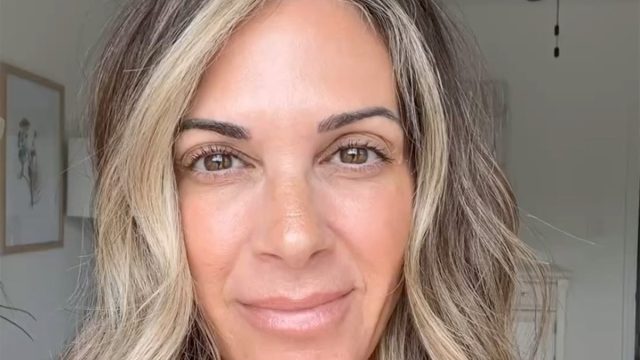Coach Lost 23 Pounds in 7 Months with This Step-by-Step Plan

Do you want to lose weight this year but aren't sure how? Follow a step-by-step approach from a top expert. Trish Koeslag is a women's nutrition and fitness coach whose mission is to help women over 40 simplify macros and movement to lose weight. In a new social media post, she reveals how she lost 23 pounds in a little over half a year. "I went from 130lbs to 107lbs in 7 months, in perimenopause," she says in the post, admitting it was "hard" and "wasn't sustainable."
She Started by Eating in a Calorie Deficit
Her first step? "From March to July, I ate in a calorie deficit," she writes. "If you need to know your calorie deficit, comment MACROS and I'll send you my free macro calculator."
She Lifted Weights
Next, she started weightlifting. "I strength trained 4x/week," she writes. According to the Mayo Clinic, strength and weight training help reduce body fat, preserve and increase lean muscle mass, and burn calories more efficiently. Strength training may also help you:
- Develop strong bones
- Manage your weight
- Enhance your quality of life
- Manage chronic conditions
- Sharpen your thinking skills.
Walking 12,000 to 15,000 Steps Per Day
She also starting getting her steps in – lots of them! "I walked 12-15K steps every day (not including cardio)," she writes. A 2018 study published in the journal Obesity found a link between walking 10,000 steps a day and weight loss and weight management. Other studies published by the Journal of American Medical Association (JAMA) in JAMA Neurology and in JAMA Internal Medicine also linked walking 10,000 steps a day to less dementia and less cardiovascular disease overall, with less heart disease, less heart failure, and fewer strokes.
RELATED: 12-3-30 Walking Method: 20 Proven Tips to Lose Weight Faster
She Also Did More Cardio
Aside from walking, she did cardio workouts. "I did cardio 4-6x per week ranging from 40-60 minutes," she writes.
She Drank a Lot of Water
Hydration was also a part of her plan. "I drank 4L of water (with LMNT electrolytes)," she writes. According to the Mayo Clinic, hydration is essential for various reasons. Water helps eliminate waste through urination, perspiration, and bowel movements, keeps your temperature regular, lubricates and cushions joints, and helps protect sensitive tissues.
She Got Enough Sleep
Those weren't the only healthy habits she incorporated into her routine. "I slept. I kept stress levels low. I prioritized whole foods," she said. What are the health benefits of sleep? According to the Sleep Foundation, getting enough z's is a mood booster, promotes heart health, regulates blood sugar, improves mental function, restores your immune system, helps relieve stress, and aids in weight loss.
She Took a Diet Break
Her next stage involved upping her calories. "I took a diet break from July to September. Calories got bumped up to maintenance for 2 months, cardio got reduced, steps stayed the same. Diet fatigue set in hard, and my Coach and I knew that it was time to call it," she writes.
RELATED: 8 High-Protein Foods with Nearly Zero Calories That Melt Fat
Then, She Started Fat Loss Again in September
After a few months, she was ready to shred again. "In September, I picked up fat loss again and worked my ass off for a photo shoot that I had booked," she said.
She Achieved Her Goal, Then Reverse Dieted
"I achieved my goal – but that lifestyle was unsustainable. So, we reversed out of my deficit, brought calories back up, cardio back down and now I live happily ever after in maintenance until I want to cut again," she said.
It Wasn't Easy, But Rewarding
"Fat loss isn't easy but the reward for achieving a goal is priceless," she concludes. She also recommends downloading a macro calculator. "It will tell you how many calories and macros to eat for your goals," she says. And if you enjoyed this article, don't miss I'm a Nutritionist and Here Are 25 Weight Loss Truths You Need to Hear.




